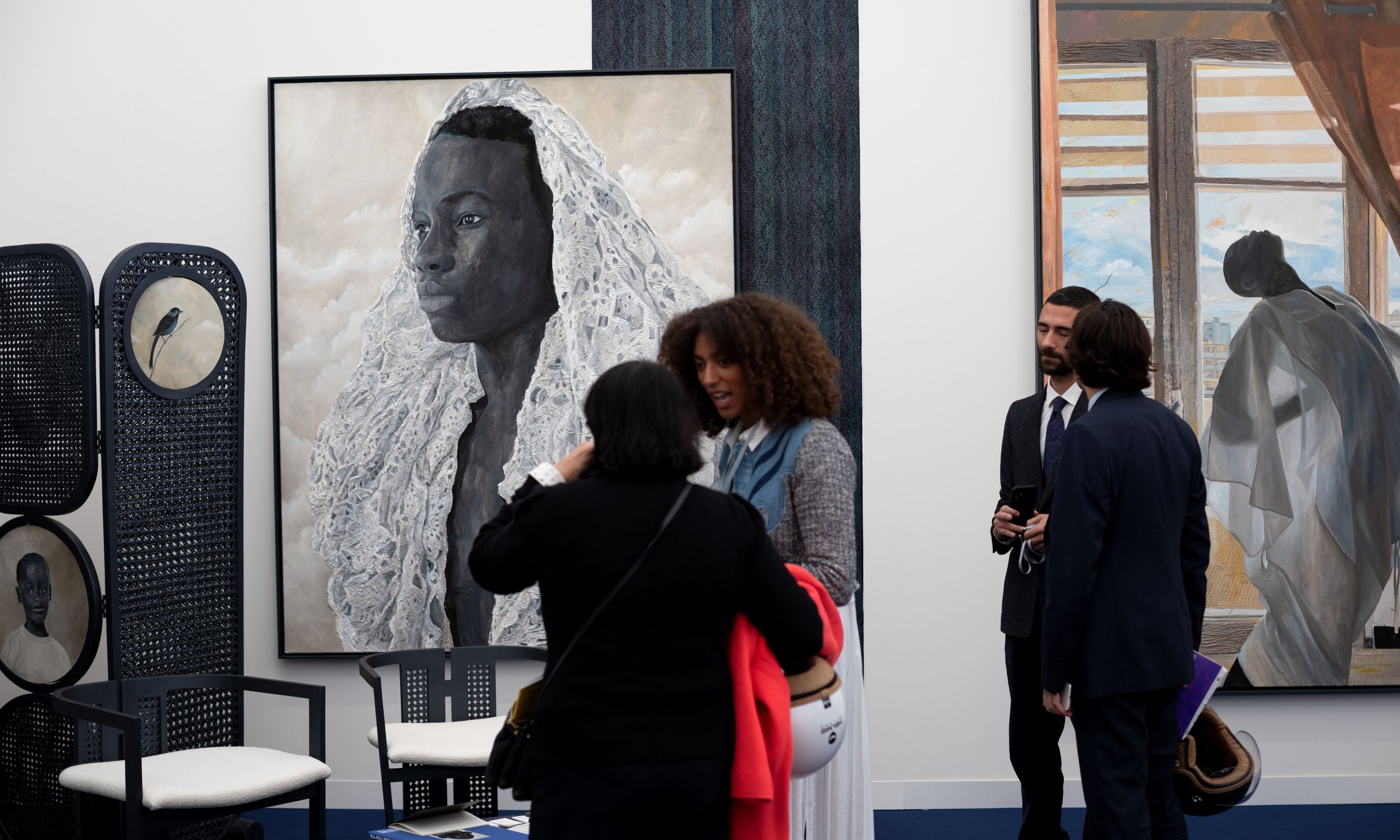Clare McAndrew estimates that 377 fairs will take place in 2024. Pictured: Galerie Cecile Fakhoury at Paris+ 2023 Image: Courtesy of Paris+ par Art Basel
Every month, our editor-at-large Melanie Gerlis shares her insights on the art market
The latest statistics are an uncomfortable read for art fair organisers heading into 2024. The latest Survey of Global Collecting, compiled for Art Basel and UBS by the art economist Clare McAndrew, found that high-net-worth collectors attended one fewer fair on average during the first half of 2023 than in the equivalent period of 2022. Worse, the share of such collectors buying from these events fell from 74% to 58% over this span.
The 2023 Art Market report, an earlier study by McAndrew—and note that this too was sponsored by Art Basel, so is as flattering to fairs as the facts allow—found the share of sales made by dealers at fairs fell from 42% in 2019 to 35% in 2022. Taking up the slack are the dealers themselves; the proportion of gallery sales grew from 40% to 47% over the same period, giving all fair exhibitors food for thought.
Anecdotally, the increasing costs of fair stands and their associated shipping, travel and entertainment budgets were already taking quite a toll pre-pandemic, but inflation has made it more acute. While online and other remote sale channels have been reduced to accessories now that we can go out to see art again, collaborative gallery events, including the galvanising openings on London’s Cork Street during Frieze in 2023, are on the up.
Art fairs too seem back with a vengeance. McAndrew estimated that 377 such events will take place in 2024, a similarly staggering volume to that of 2019. And with the growing Art Assembly group acquiring the New Zealand fair Aotearoa, truly every corner of the world is participating. Galleries, though conflicted, keep applying; witness the many dealers who have yet to make it into the relatively small Paris+ par Art Basel chomping at the bit to show at the enlarged fair, which moves to the Grand Palais in October.
The truth is that there is no alternative income stream to replace the 35% of sales brought via art fairs in 2022. Even if this fell to 25%, it would be difficult to turn down—and given that fairs in China were back in force last year, the percentage could rise again. Yet, even if inflation continues to cool, the costs of fair stands, shipping and other related incidentals are unlikely to come down. A similar phenomenon has unfolded at auction for years; the commissions keep rising but the goods keep coming in.
Still, as more competing sales channels emerge, art fairs must keep upgrading their experiences. Frieze Los Angeles, for instance, has opted to go smaller and more selective while adding more extracurricular events and food-and-beverage options. Art Basel has appointed the former head of digital at the Union of European Football Associations to “amplify” its physical shows.
Such strategies seem sensible but make it harder for the fairs themselves to be profitable, hence the increasing consolidation—and theoretically, cost savings—by the major organisers. For smaller fairs, whose success can turn on something as simple as a change of date or venue, the outlook is even more precarious. No one has cracked the code yet, but there are good reasons to try.

